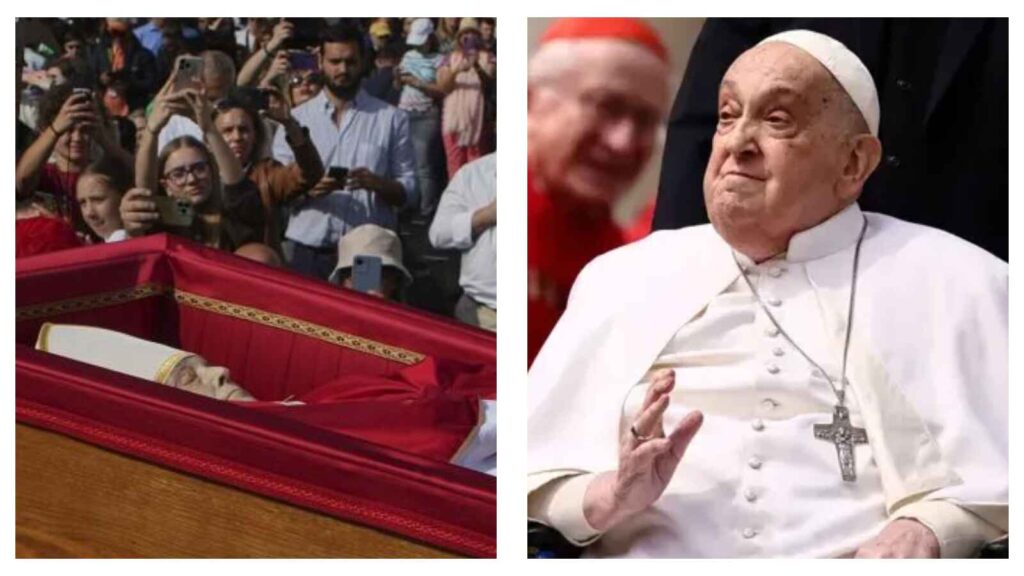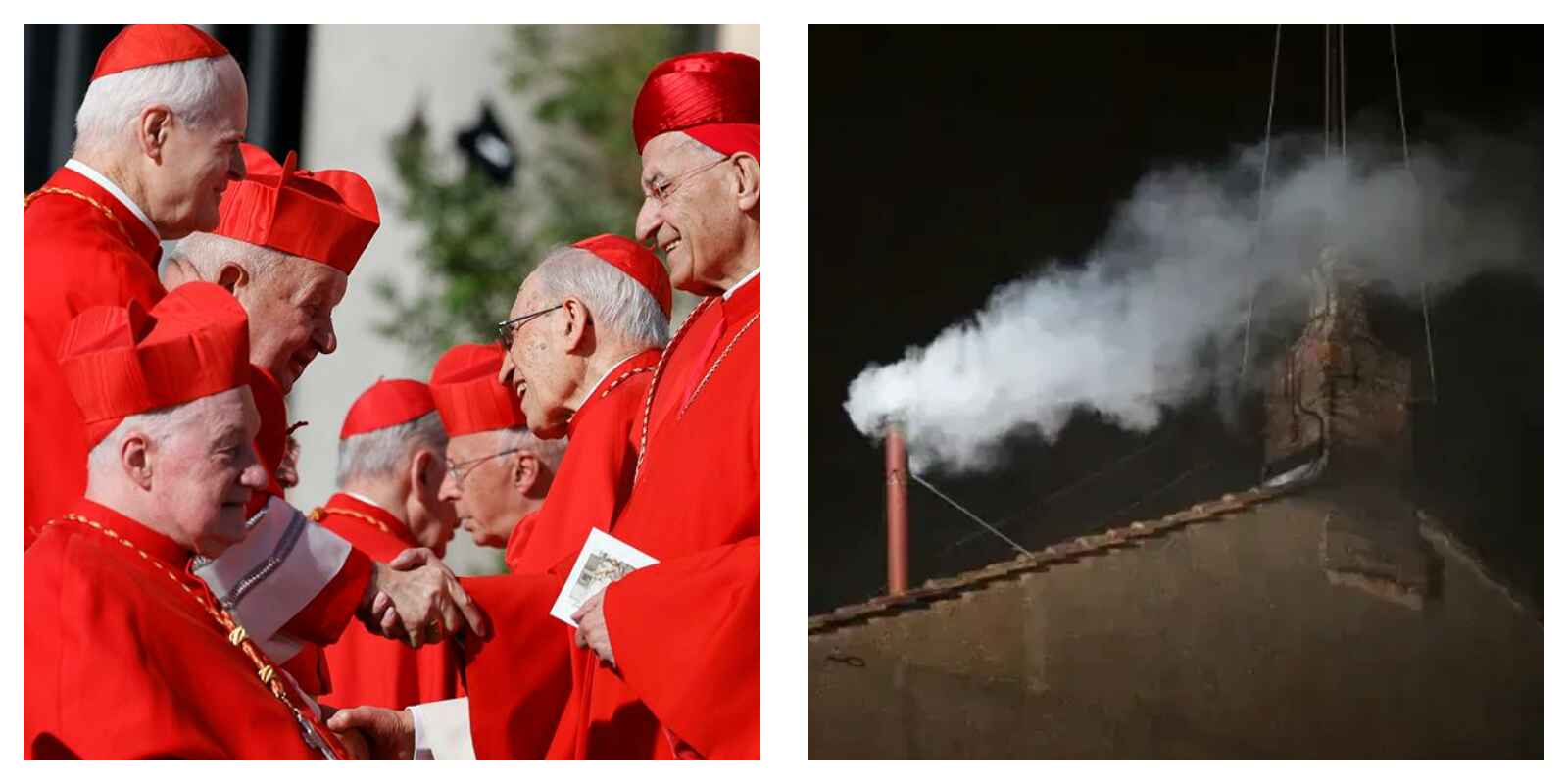By Bobbie Ysabelle Matias
“Sede vacante. The throne of the Holy See is vacant,” Cardinal Tremblay uttered as he stared mournfully at the body of the deceased pope.
Such was the scene in Conclave, a 2024 film about the Vatican’s secretive process of selecting a new leader of the Catholic Church.
The movie garnered critical acclaim, paving the way for a dedicated fanbase and bagging a Best Adapted Screenplay award at the Oscars.
Just months after the film’s release, however, Catholic communities around the world were shaken by the news of Pope Francis’ passing on April 21, thus triggering the system that has existed for centuries.
Numerous movies have taken on the challenge of telling stories surrounding the Holy See, with a few using the papal election as an integral plotpoint, such as Angels and Demons and Conclave, just to name a few.
Admittedly, these films took some creative liberties to incite suspense among its curious viewers.
However, while a conclave is a lengthy and complicated process, it is quite far from its mystery/thriller-esque counterpart on the big screen.
Before the conclave
The conclave system was established in 1274 by Pope Gregory X, with the aim of preventing a lengthy selection like the three-year-long ordeal that took place in 1271.
The election does not commence right away, however.
In fact, it will take a half a month or more after the pope’s passing before the process formally begins.
While the papacy is vacant, the camerlengo – a position currently held by Ireland-born Cardinal Kevin Farrell – becomes the chief executor of the Church, within certain limits, until the next pope is elected.
He is also the one responsible for facilitating any special provisions Pope Francis may have made for his own funeral.
The official funeral rites for the repose of the pope’s soul will last for nine days, with the pontiff set to be buried within six days of his death.
Voting process
A conclave will be attended by the cardinal electors, those who are under 80 years old and thus, eligible to vote in the election.
They have fifteen days – beginning from the date of the official declaration of the pope’s death – to gather in Rome.
While the College of Cardinals can postpone the beginning of the conclave “for serious reasons,” the apostolic constitution Universi Dominici Gregis states that the selection process must be held no less than 15 days and no more than 20 days since the pontiff’s passing.
The cardinal electors will move to the Casa Santa Marta guest house, marking the start of the conclave.
A Mass Pro Eligendo Papa will be held before the cardinals enter a communications black out.
Unlike in the Oscar-winning film, a cardinal named in pectore, or secretly, by the pope is not eligible to participate in the conclave.
Meanwhile, a cardinal who fails to make it to the beginning of the conclave will still be admitted no matter the reason upon his arrival.
Tradition and law dictates that the election will be held in the Sistine Chapel.
Normally, the dean of the College of Cardinals will preside if he is under 80 years old. Otherwise, his duties must be performed by the vice dean.
In this year’s election, however, both the dean – Cardinal Giovanni Battista Re, 91 – and the vice dean – Cardinal Leonardo Sandri, 81 – are both over 80 years old and therefore ineligible to participate in the conclave, the Catholic News Agency reported.
As such, the current conclave will be chaired by Cardinal Pietro Parolin, the senior cardinal-bishop eligible to vote.
YOU MAY ALSO LIKE: Pope Francis remembered for bridge-building legacy in Malaysia

Black smoke or white smoke?
Another Mass is held on the first day before the doors to the chapel are shut.
The cardinal electors only vote once in the first afternoon.
On the following days, the cardinals will vote four times daily – twice in the morning and twice in the afternoon – until a two-thirds majority is achieved in order to elect a pope.
Should the electors fail to select a pope after the first three days, they will be given a one-day break for prayer and reflection.
During this time, “informal discussion” is encouraged among cardinals and “a brief spiritual exhortation” will be provided by the senior cardinal in the Order of Deacons.
The voting resumes for another seven ballots, with a similar break if it produces no successful result.
Smoke is released from the chimney of the Sistine Chapel after every vote, with black smoke being a signal for those waiting in St. Peter’s Square that a pontiff is yet to be selected.
A runoff is triggered if no pope is elected even after 33 rounds of voting.
According to Pope Benedict XVI’s amendment, the top two contenders would be in the run off.
Once the required majority is achieved, the senior cardinal will ask the one elected if he accepts his election.
As soon as he says “yes,” he is “immediately Bishop of the Church of Rome, true Pope and Head of the College of Bishops,” The Pillar stated, citing the canon law.
A white smoke will then emanate from the chimney, signifying that a new pope is now ready to lead the Holy See.
‘Papabili’
Agence France-Presse named 15 cardinals who could potentially become the next pope, known as the papabili.
In Europe, there are Parolin (70, Italy); Pierbattista Pizzaballa (60, Italy); Matteo Maria Zuppi (69, Italy); Claudio Gugerotti (69, Italy); Jean-Marc Aveline (66, France); Anders Arborelius (75, Sweden); Mario Grech (68, Malta); Peter Erdo (72, Hungary); and Jean-Claude Hollerich (67, Luxembourg).
There are only two favourities in Asia, namely Luis Antonio Tagle (67, Philippines) and Charles Maung Bo (76, Myanmar).
In Africa, Peter Turkson (76, Ghana) and Fridolin Ambongo Besungu (65, Democratic Republic of Congo).
The United States also only has two potential successors for the pontificate: Robert Francis Prevost, 69, and Timothy Dolan, 75.
While these are the names that have been floating around the media for the next pope, it is not guaranteed that the new pontiff would come from them.
Goodbye, Papa Francesco
Pope Francis’ coffin has already been transferred from the Casa Santa Marta to St. Peter’s Basilica on Wednesday, April 23, where he will lie in state for the pilgrims to pay their respects until his funeral.
The Vatican on Wednesday reported that over 20,000 people have gathered in St. Peter’s Square to pay tribute to Latin America’s first pope.
Cardinal Farrell will lead the rite of the sealing of the late Pope’s coffin on Friday evening, April 25, before the funeral on April 26.
Francis, whose pre-papacy name is Jorge Mario Bergoglio, had wished to be buried in the papal basilica of St. Mary Major in Rome, not in St. Peter’s Basilica.
READ NEXT: Pope Francis offered glimmer of hope in 2015 Philippines visit
